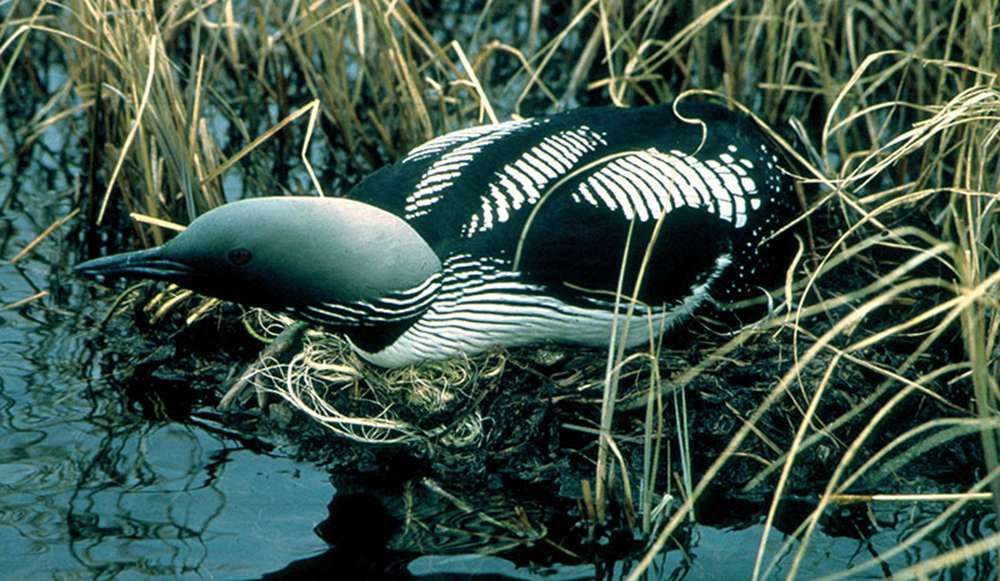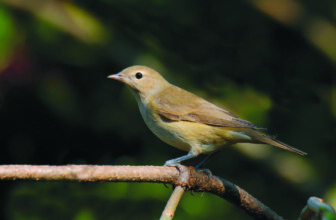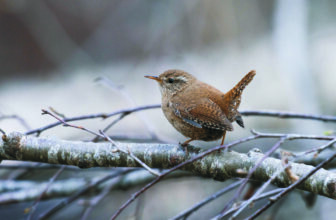
Black-throated Diver
When the autumn gales and bird migration kick in then it is worth watching out for emergency avian landings. strange things can-and do- happen.
Last month, in my ‘Welcome to Cranleigh-on-Sea’ article, we looked at some of the seabirds who are regular or rare visitors to Cranleigh and the surrounding villages.
Many of these might be expected – but the ones featuring in my column this month certainly were not.
Take the experience of Cranleigh and District Conservation Volunteers’ stalwart Tony Fox, for example, who was walking south of Cranleigh on October 26th, 1988, following gales.
What should greet him in a maize stubble field near Masser’s Wood but a . . . Black-throated Diver! Cranleigh’s one and only record. I don’t know who was more stunned – him or the bird.
It was thought to have hit overhead wires but was still strong enough to chase and attack the finder – and his large dog. A return visit to capture the bird later in the morning proved fruitless until it was relocated in a neighbouring field of long grass after a tenacious hour-long search.
Then it attacked local voluntary RSPB warden Peter Grundy before being caught in a blanket and taken to a local vet for a check-up.
Thankfully it was pronounced fit, released on a Surrey lake, and appeared in good health the next day when I checked it out.
The Black-throated Diver, which breeds in Scandinavia and Scotland, was not located again so let’s hope it found its way back to sea or wherever it was trying to get to before the winds had their way.
Much smaller, but just as surprising to the finders, were Petrels. A Storm Petrel is a dainty and far-travelling seabird, just 16cm long. They sometimes follow ships but even then can look like specks to the naked eye. Most people who like to see birds have never encountered one.
Yet a Storm Petrel made it to Cranleigh on September 10 1986 – although it got no further. It was sadly found dead by Peter Curtis and was only the fourth county record. There was a 13 year wait for the next one, found by former Cranleigh birder Dave Harris on a reservoir at Walton-on-Thames. This time it was a live record.
I have, unsurprisingly, never managed to see the slightly bigger fork-tailed Leach’s Petrel in Surrey so it still grates that there have been three local records. One of these hard-to-see-even-at-sea species was picked up dead in Cranleigh on November 29 1881 and recorded in The Field by a Mr Townsend (December 3 1881 p 825).
In 1999 I wrote about a previously unpublished record concerning a dead Leach’s Petrel shown to my friend Murray Hook in the Cranleigh Cricket Club pavilion by the groundsman Bill Coles. This followed gales in the ‘late 1940s-1950’. The ground was prone to notorious flooding and, it seems, the bird may have mistaken the giant puddle for a lake. Howzat!
The third Leach’s Petrel, was found alive in Cranleigh on October 31 1952. This followed gales resulting in a remarkable wreck of an incredible 6,700 birds in Britain that year. Four landed in Surrey.
Auks, total seabirds you might think, have also made it to the village following storms. There are two records of Razorbill. One in the Charterhouse Collection in the 19th century was received from Cranleigh. Another specimen was also shot near the village and ended up in a collection built up by William Stafford, in Godalming.
In those days guns were your binoculars and the saying went: ‘What’s hit is history, what’s missed is mystery.’
Another species prone to get wrecked after a storm is the Little Auk. And, yes, there is a local record. This comes from the archives of the great Sir John Bucknill, who wrote The Birds of Surrey in 1900. He obtained a specimen he considered to be one of four collected by William Stafford over a 40 year span in the late 1800s. It was sold independently and ‘stated on the case label to have been found at Cranleigh.’ No date is given.
Storms may come and storms may go – and when they do then be alert for what they bring down with them. It’s not just trees.
There have not been any recent post-storm rarity sightings around here to my knowledge. I think there should have been. But it seems people are just not out there looking, and observing, like they were in days gone by.
Twitter – @Crane_Spotter











